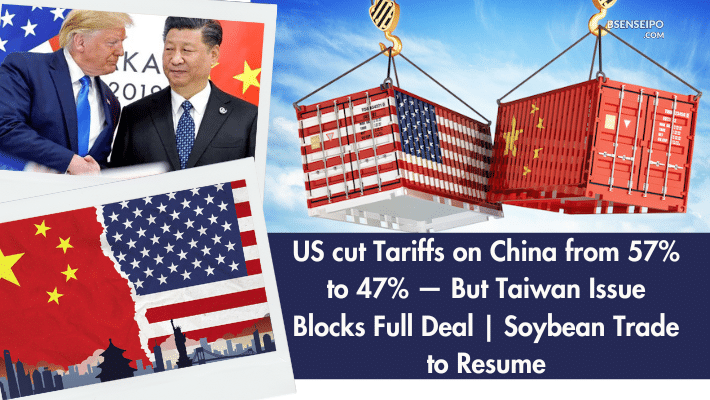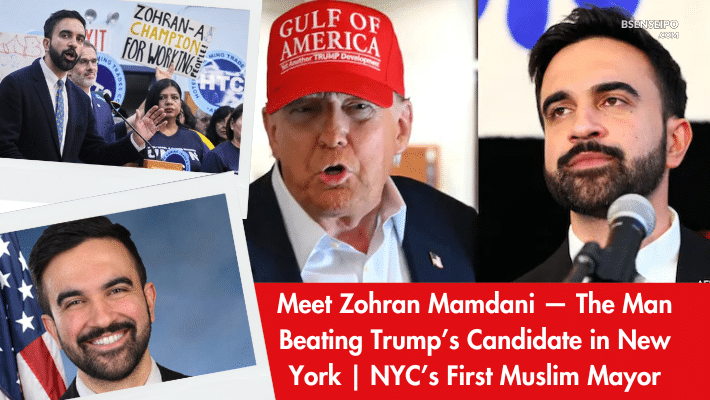US-China Trade Truce 2025: What Trump’s 47% Tariff Decision Means for the World
US-China Trade Deal Update: The long-awaited US-China trade agreement remains uncertain after the latest high-profile meeting between Donald Trump and Xi Jinping in South Korea. While the two leaders stopped short of signing a comprehensive deal, Trump announced a partial tariff rollback — a signal that talks are still alive but far from resolved.
US Tariffs Reduced, But No Full Deal Yet
President Trump confirmed that the United States will cut tariffs on Chinese imports from 57% to 47%, calling it a “gesture of goodwill” toward stabilizing global trade relations. However, he emphasized that the agreement does not include any concessions related to Taiwan, maintaining Washington’s strategic position on the sensitive geopolitical issue.
“Savings have been good with Xi Jinping. China will soon start purchasing soybeans from the US,” Trump said during a post-meeting statement.
The comment indicates that while agricultural trade may resume, deeper disputes — such as technology access, rare-earth exports, and intellectual property rights — remain unresolved.
Why Trump Couldn’t Finalize the Deal
Despite the tariff adjustment, several key challenges prevented a full-fledged agreement:
- Taiwan Tensions:
Trump reaffirmed that “there will be no savings on Taiwan,” signaling continued US support for Taiwan — a major sticking point for Beijing. - Tech and Security Controls:
The US remains firm on restricting China’s access to advanced semiconductors and AI technologies, a red line for both sides. - Trade Enforcement Gaps:
Previous trade frameworks, like the “Phase One” deal, suffered from weak compliance mechanisms. Trump’s negotiators are seeking verifiable commitments — something Beijing has resisted. - Political Timing:
With the 2026 election cycle approaching, Trump appears cautious about making concessions that could be perceived as “soft on China.”
What’s Next? Upcoming Visits Could Revive Talks
In a major diplomatic development, Trump announced he will visit China in April 2026, followed by a return visit from Xi Jinping to the United States later that year. Analysts say these reciprocal visits could set the stage for a broader Phase Two trade framework, possibly addressing key economic and strategic issues.
“We have great understanding, and we’ll continue to talk. Xi and I have always had a great relationship,” Trump added, keeping the tone optimistic despite the lack of a signed pact.
Global Market Impact
The uncertainty around the deal has created mixed reactions in global markets:
- Stock Markets: Asian and European indices fluctuated as investors weighed the partial tariff relief against the lack of a full agreement.
- Commodities: Soybean and agricultural futures rose sharply after Trump’s remark about resumed Chinese purchases.
- Currencies: The US dollar weakened slightly, while the Chinese yuan strengthened, reflecting optimism about trade normalization.
- Safe Havens: Gold prices remained steady, as traders balanced short-term optimism with long-term geopolitical risks.
Market strategists warn that unless a comprehensive deal is finalized, volatility could persist, especially in export-driven sectors.
Expert View
Economists say the tariff reduction is a positive sign but stress that the structural rift between the world’s two largest economies remains.
“What we’re seeing is more of a temporary truce than a trade deal,” said Daniel Wong, Chief Analyst at GlobalTradeWatch. “It’s enough to calm markets but not enough to restore investor confidence fully.”
Conclusion
The US-China trade relationship appears to be in a delicate balancing act — not a failure, but not a success either. The tariff reduction offers temporary relief, but unresolved political and strategic issues continue to cloud the long-term outlook.
With Trump set to visit China in April 2026 and Xi Jinping expected to reciprocate, the coming months could determine whether this fragile truce evolves into a lasting peace — or reignites another phase of the global trade war.




